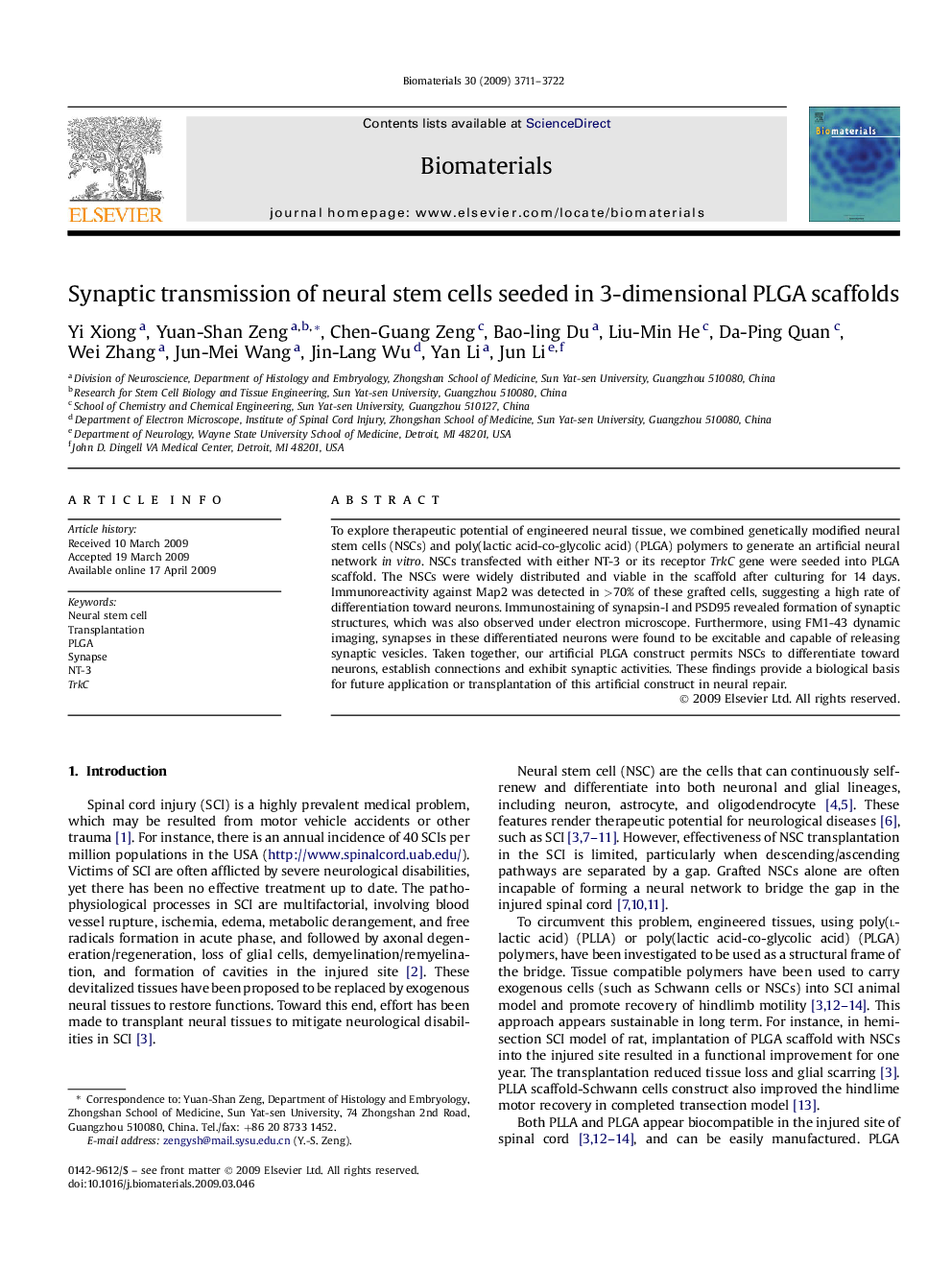| Article ID | Journal | Published Year | Pages | File Type |
|---|---|---|---|---|
| 9201 | Biomaterials | 2009 | 12 Pages |
To explore therapeutic potential of engineered neural tissue, we combined genetically modified neural stem cells (NSCs) and poly(lactic acid-co-glycolic acid) (PLGA) polymers to generate an artificial neural network in vitro. NSCs transfected with either NT-3 or its receptor TrkC gene were seeded into PLGA scaffold. The NSCs were widely distributed and viable in the scaffold after culturing for 14 days. Immunoreactivity against Map2 was detected in >70% of these grafted cells, suggesting a high rate of differentiation toward neurons. Immunostaining of synapsin-I and PSD95 revealed formation of synaptic structures, which was also observed under electron microscope. Furthermore, using FM1-43 dynamic imaging, synapses in these differentiated neurons were found to be excitable and capable of releasing synaptic vesicles. Taken together, our artificial PLGA construct permits NSCs to differentiate toward neurons, establish connections and exhibit synaptic activities. These findings provide a biological basis for future application or transplantation of this artificial construct in neural repair.
